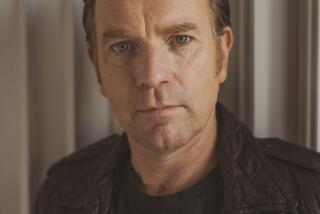Artistic ‘Face of Russia’ Offers More Than Meets the Eye
- Share via
“The Face of Russia” has a golden gleam typical of trademark PBS programs that resemble coffee-table books, as valued for their slick-covered decor as for their contents.
Nonetheless, it’s as rooted in scholarship as in gorgeous pictures, even though the latter are available throughout its linear, tightly packed three hours, displaying the cultural documentary itself as an artwork nearly as distinctive as the iconography and onion domes so prominent in tonight’s Part 1.
You’ve a sense here--from the program’s striking looks and historian James H. Billington’s energetic, eloquent narration--of all Russia being a gallery. Here we find the arts--painting, architecture, literature, music and film--not only representing history but also in some respects anticipating it.
Just how this relates to Russia’s tenuously emerging democracy is not directly addressed by Billington, who is the Librarian of Congress, or by producer Michael Gill, whose roots in this TV genre extend back nearly three decades to his guidance of the famed series “Civilisation” with Kenneth Clark.
Yet “The Face of Russia” quite masterfully connects dots across centuries, with tonight’s episode, for example, being in part a tale of two Borises, from Godunov to Yeltsin, with Billington comparing the body language of the Russian president to religious icons of the past.
The interweaving of art and religion dominates this hour, with next week’s Part 2 covering the literary impact of Pushkin and Gogol and architectural influences of empresses Elizabeth and Catherine the Great. The “wooden world of Muscovy” is measured against St. Petersburg, a European-style, graceful city built as a window to the west and, Billington notes, “designed not so much for people as parades.” Airbrushed from its richness and elegance, of course, was the suffering peasantry, whose voice would emerge in the Russian novel.
The last episode is perhaps the most captivating of this troika, explaining how the music of Musorgsky and the pioneering filmmaking of Sergei Eisenstein helped reshape the face of Russia in its passing from tradition to revolution.
And now, as another millennium approaches, that face is changing again.
* “The Face of Russia” premieres at 10 tonight on KCET-TV Channel 28.
More to Read
The complete guide to home viewing
Get Screen Gab for everything about the TV shows and streaming movies everyone’s talking about.
You may occasionally receive promotional content from the Los Angeles Times.






